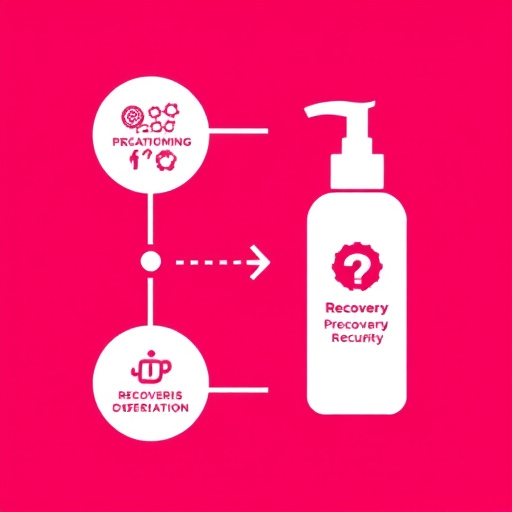Workers' Compensation is a crucial legal system supporting employees injured at work, offering specialized medical treatment, rehabilitation, and financial aid. Prompt reporting of workplace injuries is vital for accessing tailored care, including RICE method for minor sprains/strains and immediate attention for severe cases. Employers and employees must understand their rights and obligations to navigate the system effectively. Specialized medical care, involving multidisciplinary teams, ensures holistic healing. Rehabilitation strategies, like modified duty assignments, enhance recovery and job satisfaction. Preventing future injuries through training, hazard mitigation, open communication, inspections, and PPE access creates a safer work environment, reducing workers compensation injury care costs.
Workplace injuries can have significant impacts on employees’ lives. Understanding workers’ compensation and its integral role in providing immediate treatment and specialized care is crucial. This article delves into various aspects of work-related injuries, from common types and their immediate management to the filing process and rehabilitation strategies. Additionally, it explores best practices for employers to prevent future incidents, ensuring a comprehensive guide on workers compensation injury care.
- Understanding Workers' Compensation and Its Role in Injury Care
- Common Workplace Injuries and Their Immediate Treatment
- The Process of Filing a Claim: Rights and Obligations
- Specialized Medical Care for Work-Related Injuries
- Rehabilitation and Return to Work Strategies
- Preventing Future Injuries: Best Practices for Employers
Understanding Workers' Compensation and Its Role in Injury Care

Workers’ Compensation is a crucial system designed to provide support and care for employees who sustain injuries or develop illnesses related to their jobs. This legal framework plays a pivotal role in ensuring that workers receive appropriate medical treatment, rehabilitation, and financial assistance during their recovery. When an on-the-job injury occurs, understanding the rights and benefits offered by Workers’ Compensation is essential for both employers and employees.
The process facilitates access to specialized care tailored to the specific needs of work-related injuries. This includes coverage for medical expenses, physical therapy, vocational rehabilitation, and in some cases, income replacement during periods of incapacity. It acts as a safety net, offering a structured approach to managing workplace injuries, ultimately fostering a safer and healthier work environment.
Common Workplace Injuries and Their Immediate Treatment

Workplace injuries are a prevalent concern, with various common types occurring across different industries. One of the most immediate challenges for workers and employers alike is providing adequate care and ensuring proper workers compensation injury care. Sprains and strains are frequent occurrences, often resulting from repetitive motions or lifting heavy objects. These injuries can be mitigated with rest, ice, compression, and elevation (RICE), along with over-the-counter pain relievers.
Other typical workplace injuries include cuts, lacerations, and contusions due to accidents involving machinery, tools, or slippery surfaces. Immediate treatment for such injuries involves cleaning the wound, applying antiseptic, and bandaging it. In severe cases, seeking medical attention is crucial to prevent infection and ensure proper healing. Additionally, occupational hazards like noise exposure can lead to long-term issues like hearing loss, emphasizing the need for prompt recognition and specialized workers compensation injury care.
The Process of Filing a Claim: Rights and Obligations

When a worker sustains an injury on the job, the process of filing a claim for specialized care under workers’ compensation is essential in ensuring proper treatment and financial support. The first step involves reporting the injury to the employer or the designated person responsible for handling such cases within a specific timeframe, usually as soon as possible after the incident. This prompt action triggers the formal claims procedure, guaranteeing the worker’s rights to necessary medical care and potential wage replacement during recovery.
Workers have the right to seek specialized care for their work-related injuries, including access to healthcare professionals and facilities specifically equipped to treat such conditions. The employer or the insurance carrier is obligated to facilitate this process by approving reasonable medical expenses and ensuring a smooth transition to appropriate treatment options. Understanding these rights and obligations is crucial for both employers and employees to navigate the workers’ compensation system effectively, fostering a supportive environment for injured workers to receive the care they deserve.
Specialized Medical Care for Work-Related Injuries

Specialized medical care plays a pivotal role in managing and treating work-related injuries, often referred to as workers’ compensation injuries. This type of care is designed to address the unique challenges faced by individuals who sustain injuries on the job, ensuring they receive the best possible treatment and support during their recovery journey. Specialized services extend beyond general healthcare, offering tailored interventions that consider the specific nature of work-related injuries.
Workers’ compensation injury care often involves a multidisciplinary approach, with experts from various fields collaborating to provide comprehensive treatment. This may include access to specialized doctors, therapists, and rehabilitation specialists who are well-versed in occupational health. The goal is to not only treat the physical injuries but also address any psychological or vocational impacts resulting from the work incident. This holistic care ensures that workers can return to their jobs safely and with enhanced capabilities, fostering a more productive and supportive work environment.
Rehabilitation and Return to Work Strategies

Rehabilitation plays a pivotal role in helping workers recovering from on-the-job injuries return to their regular routines and work roles successfully. This process involves a combination of medical treatments, therapies, and strategies tailored to each individual’s specific needs and limitations. A comprehensive rehabilitation program can significantly enhance a worker’s chances of a full recovery and safe return to work.
Effective return-to-work strategies focus on gradual reintegration into the workplace while ensuring the injured worker’s well-being and job satisfaction. These strategies often include modified duty assignments, where workers perform tasks that are less physically demanding but still allow them to utilize their skills. Regular communication between healthcare providers, employers, and employees is essential to assess progress, adjust plans as needed, and foster a supportive environment for a successful return to the workforce, ultimately minimizing the impact of workers compensation injury care on long-term career prospects.
Preventing Future Injuries: Best Practices for Employers

Preventing future injuries is a multifaceted approach that requires proactive measures from employers. Regular training sessions and workshops for employees can significantly reduce workplace accidents. These programs should cover safe lifting techniques, proper use of equipment, and emergency response procedures. Additionally, maintaining a clean and organized work environment, free from potential hazards like loose cables or slippery surfaces, is paramount. Implementing a robust reporting system encourages workers to disclose safety concerns without fear of retaliation.
Employers should also promote a culture of open communication where employees feel comfortable discussing unsafe working conditions. Regular inspections and audits can identify and rectify issues before they lead to injuries. Providing access to personal protective equipment (PPE) and ensuring its use is essential, especially in high-risk industries. Investing in these preventive strategies not only reduces workers compensation injury care costs but also fosters a safer and healthier work environment.














